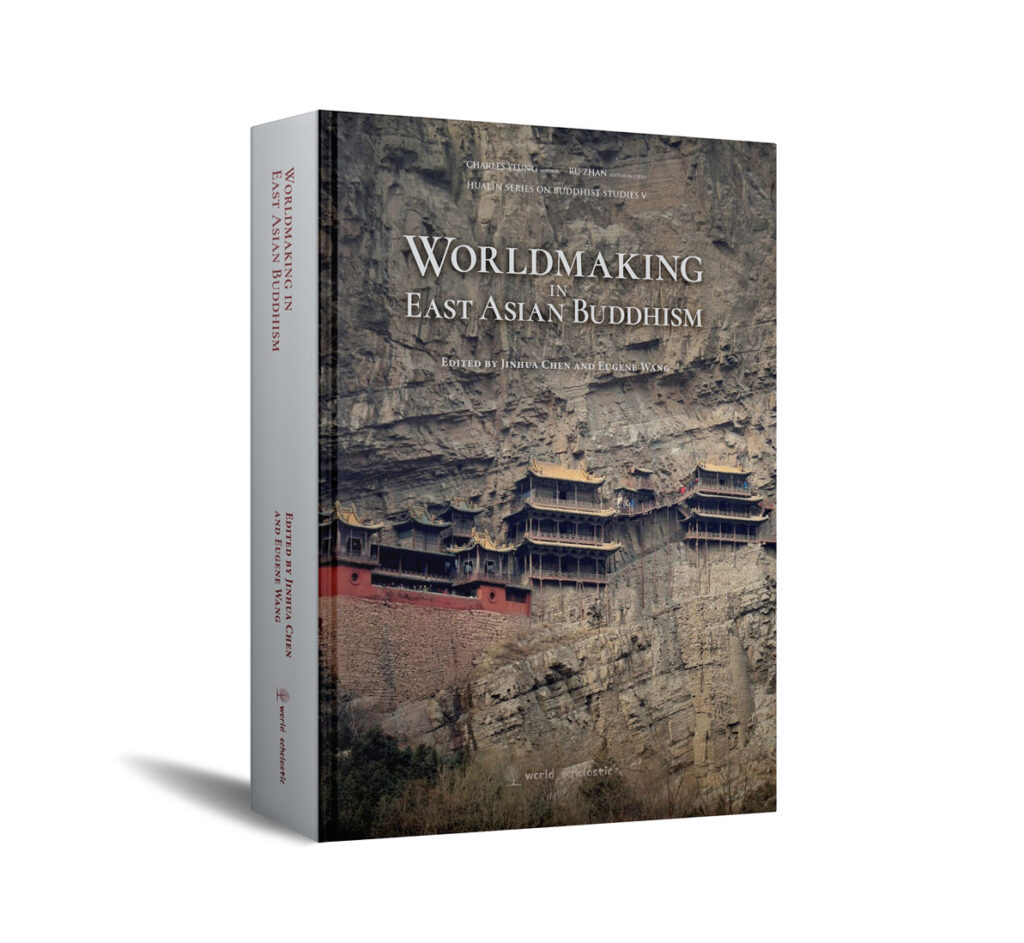Worldmaking in East Asian Buddhism

Edited by Jinhua CHEN and Eugene WANG
Series: Hualin Series on Buddhist Studies V
Hardcover ISBN: 978-981-17276-4-1
Paperback ISBN: 978-981-17281-6-7
Publishing Date: 2022
Publisher: World Scholastic Publishers
Pages: 436
Buddhism serves as a unifying spiritual force in East Asia bridging diverse range of interconnected beliefs and cosmologies, and providing spiritual guidance in the development of both secular and religious aspects of East Asian societies. The scholarly discourse surrounding East Asian Buddhism and its influence on the making of the world has long been a recurring theme, prompting generations of academics to revisit the global impact and contributions of these traditions. Through this platform, our aim is to not only elucidate and enhance the entire knowledge of this Buddhist-secular framework, but also provide a historical perspective that aids in comprehending the modern world.
With support from the Glorisun Global Buddhist Network, the FROGBEAR (From the Ground Up: Buddhism and East Asian Religions) project and Harvard FAS CAMLab jointly hosted the international conference on “Worldmaking in East Asian Buddhism” from August 10th to 16th, 2021. The conference provided a platform for interdisciplinary exchange of ideas and scholarly investigation. This volume of articles has been co-edited by Professor Jinhua Chen from the University of British Columbia and Professor Eugene Wang from Harvard University. The articles in this volume are based on the submissions presented during the conference.
Preface: Hualin Series on Buddhist Studies (by Ru Zhan)
Foreword: East Asian Buddhist Worldmaking (by Jinhua Chen)
1. Buddhist Worldviews and Worlds Viewed
-
- 1.1. The Moon as a Celestial Body and God in the Buddhist Worldview: From India to China
Jeffrey KOTYK - 1.2. Searching for a Bodhisattva Land on Earth: Potalaka Faith in East Asia
Erika VÖRÖS - 1.3. The Transmission of the Four- Pointed Cape Motif: From Gandhāra to the East and West
LI Yicong 李怡淙 - 1.4. Conceptualization and ‘World- Making’: A Study on Prapañca as an Imprint in Yogācāra Treatises
WANG Beier - 1.5. Buddhist Worldmaking in the American Midcentury
Sara LAWS
- 1.1. The Moon as a Celestial Body and God in the Buddhist Worldview: From India to China
2. One Temple, One World
-
- 2.1. The Design of Ximing Monastery and Its Influence on Japanese Monasteries
ZHAN Ru - 2.2. The Gimbal-Mounted Xiangnang and Its Transmission to the Islamic World during the Yuan Dynasty
HUANG Bing - 2.3. Beetles and the Buddha: The Tamamushi Shrine, Smallpox, and Healing in Seventh-Century Japan
Yingxue WANG - 2.4. On Bonshakuji as the Penultimate Buddhist Temple to Protect the State in Early Japanese History
George A. KEYWORTH
- 2.1. The Design of Ximing Monastery and Its Influence on Japanese Monasteries
3. New Worlds Emerging from Religious Mergingse
-
- 3.1. Making Four Buddhist Worlds: A Reading of the Liturgies for Creating Ritual Spaces in Dunhuang Manuscripts
CHEN Huaiyu - 3.2. Śākyamuni Buddha World Depicted in Vimalakīrti Scenes in Dunhuang Mogao Caves: The Expansion of Buddha Land to China
HAMADA Tamami - 3.3. The Pure Land as a Place: Storytelling and Ritual Practice
Barend J. TER HAAR
- 3.1. Making Four Buddhist Worlds: A Reading of the Liturgies for Creating Ritual Spaces in Dunhuang Manuscripts
- Author Biographies
- Index








